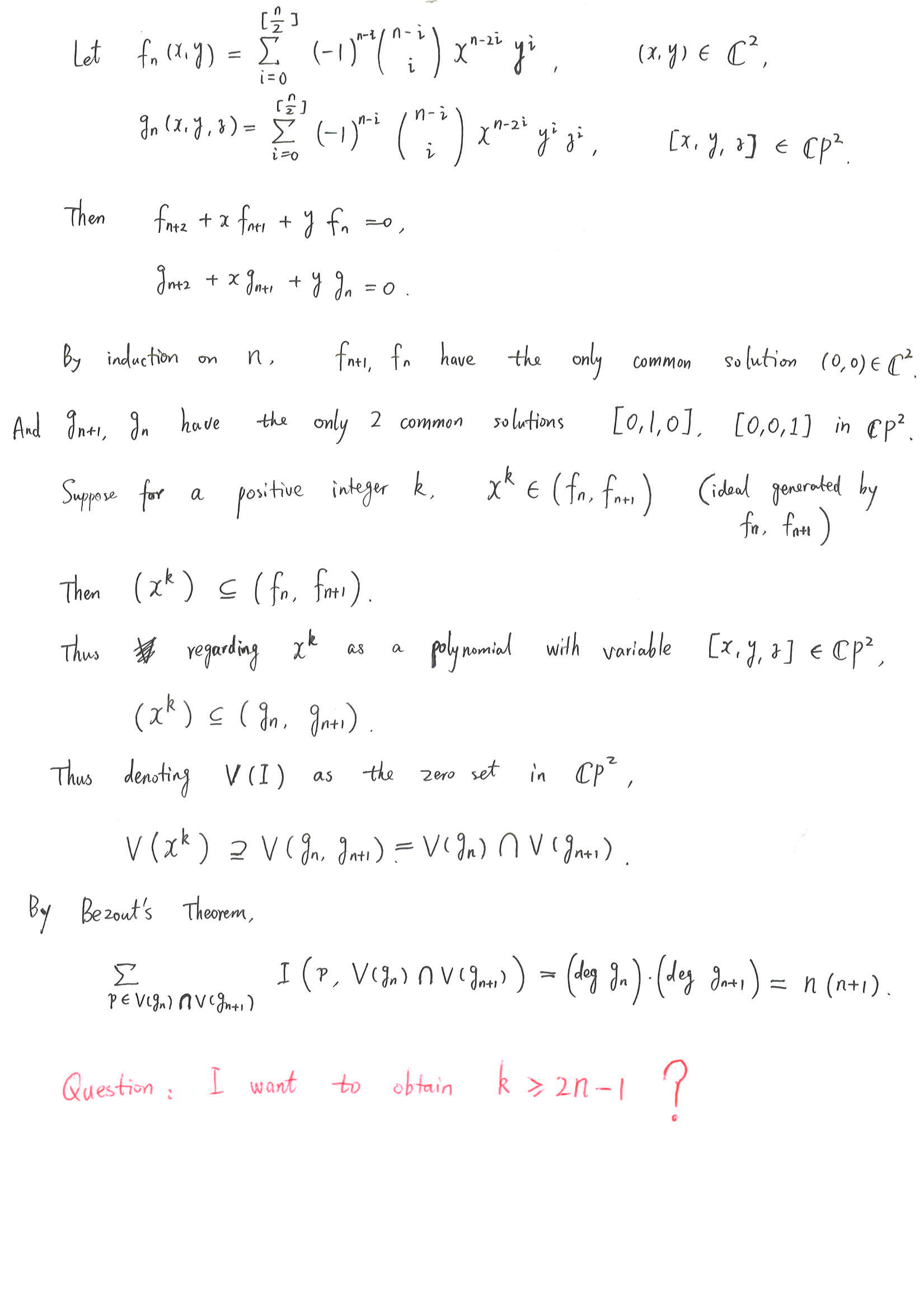Perhaps you could try using Groebner bases. The two examples that I computed using Macaulay2 (displayed below) suggest that there is a Groebner basis for $(f_n, f_{n+1})$ consisting of polynomials with leading terms of degree $n$.
(These are $f_n, yf_{n-1}, y^2f_{n-2}, \cdots, y^n$, up to signs.)
The examples also suggest that when we start reducing x^{2n-2} with respect to this Groebner basis, $y^{n-1}$, which cannot be reduced to zero, shows up at some stage.
Macaulay2, version 1.5
with packages: ConwayPolynomials, Elimination, IntegralClosure, LLLBases,
PrimaryDecomposition, ReesAlgebra, TangentCone
i1 : R = kk[x,y];
i2 : f = n -> sum apply(floor(n/2)+1, i -> (-1)^(n-i)*binomial (n-i,i)*x^(n-2*i)*y^i)
o2 = f
o2 : FunctionClosure
i3 : gens gb ideal (f 5, f 6)
o3 = | y5 xy4 x2y3-y4 x3y2-2xy3 x4y-3x2y2+y3 x5-4x3y+3xy2 |
1 6
o3 : Matrix R <--- R
i4 : x^8 % ideal (f 5, f 6)
4
o4 = 14y
o4 : R
i5 : x^8 + x^3*(f 5)
6 4 2
o5 = 4x y - 3x y
o5 : R
i6 : x^8 + (x^3+4*x*y)*(f 5)
4 2 2 3
o6 = 13x y - 12x y
o6 : R
i7 : x^8 + (x^3+4*x*y)*(f 5) - 4*y^2*(f 4)
4 2 4
o7 = 9x y - 4y
o7 : R
i8 : x^8 + (x^3+4*x*y)*(f 5) - 13*y^2*(f 4)
2 3 4
o8 = 27x y - 13y
o8 : R
i9 : x^8 + (x^3+4*x*y)*(f 5) - 13*y^2*(f 4) - 27*y^3*(f 2)
4
o9 = 14y
o9 : R
i10 : gens gb ideal (f 6, f 7)
o10 = | y6 xy5 x2y4-y5 x3y3-2xy4 x4y2-3x2y3+y4 x5y-4x3y2+3xy3 x6-5x4y+6x2y2-y3 |
1 7
o10 : Matrix R <--- R
i11 : x^10 % ideal (f 6, f 7)
5
o11 = 42y
o11 : R
Perhaps there is a pattern above which can be exploited to prove (if it indeed is true!) that $x^{2n-2}$ reduces to $y^{n-1}$.

